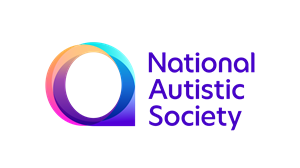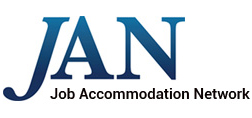Autism in the Workplace
It's Autism Awareness week, and we're here to celebrate and raise awareness about Autism in the workplace. Here at Ministry of Motion, we believe that everyone should have the opportunity to reach their full potential, and that neurodiversity can play a huge part in creating amazing designs. That's why we've put together this blog to explore how we can create more inclusive workplaces that support and empower individuals with Autism. So, let's dive in and learn more about how we can create a more inclusive world for everyone!
Sensory Processing
When creating an inclusive workplace, it's important to take Sensory Processing into account. Sensory Processing is a really important concept that helps us understand how our brains process information from our senses, like sight, sound, touch, and smell.
For neurotypical individuals, their brains are programmed to process sensory information in a way that allows them to navigate the world around them. But for some people, like those with sensory processing differences or conditions like Autism, the brain can struggle to process sensory information in the same way.
This can lead to a wide range of experiences, from feeling overwhelmed or anxious in busy or loud environments, to seeking out sensory input like touching different textures or seeking out certain smells.
Understanding sensory processing is really important for creating more inclusive environments that meet the needs of everyone. By being aware of different sensory needs, we can create spaces and experiences that are comfortable and accessible for everyone.
-png.png?width=750&height=422&name=Autism%20Awareness%20Week%20Graphic%20V2%20(1)-png.png)
Autism & Creativity
Autism can often increase creativity in individuals because of the unique ways their brains process information. Many people with Autism have a unique way of looking at the world, which can result in them seeing things from new and different perspectives. This can lead to creative ideas and solutions that may not have been considered otherwise.
Additionally, some individuals with Autism may have a hyperfocus on specific interests or activities, which can lead to a deep level of knowledge and expertise in that area. This knowledge and expertise can be used in creative ways, such as in developing new ideas or products.
While creativity can also be present in neurotypical individuals, there is a growing body of research and anecdotal evidence that suggests a link between Autism and increased creativity. By embracing and valuing the unique perspectives and strengths of individuals with Autism, workplaces can tap into this potential and foster a more innovative and inclusive culture.
10 Tips for Creating an Inclusive Workplace:
-
1. Provide Clear and Concise Communication
Employees with Autism often prefer clear and direct communication. Avoid using abstract language or metaphors, and instead, use clear and concise language to ensure that instructions are understood.
-
2. Create a Quiet and Comfortable Work Environment
It's possible that employees with Autism may be sensitive to certain stimuli, such as loud noises or bright lights. Providing a quiet and comfortable work environment can help to reduce sensory overload.
-
3. Provide Structure & Routine
People with Autism may thrive in a structured environment that provides routine and predictability. Consider providing a clear schedule of tasks and deadlines, and providing ample time for breaks.
-
4. Offer Flexibility
Neurodivergent employees may have different needs and preferences when it comes to work schedules or work arrangements. Offering flexibility can help to accommodate these needs and create a more inclusive workplace.
-
5. Provide Sensitivity Training
It's important to educate your staff on Autism and the challenges that individuals with Autism may face. This can help to build understanding and empathy, and ensure that your team is making the most of everybody's skills and interests.
-
6. Use Visual Aids
Providing visual aids and support tools such as schedules, checklists, and picture symbols can help individuals with Autism to understand expectations and tasks more easily.
-
7. Make Sure to Check In
Creating opportunities for regular feedback and check-ins can help employees to feel more comfortable and confident in their work, and provide an opportunity to address any concerns or issues.
-
8. Establish a Support System
Providing additional support and guidance such as a buddy system or mentorship program can provide neuordivergent individuals with an additional level of support and guidance, and help them to feel more connected to their workplace.
-
9. Offer Shadowing Opportunities
Consider allowing for job shadowing or workplace tours to help individuals with Autism acclimatise to their new surroundings - this can help individuals with Autism to become familiar with their new surroundings and better understand their role and responsibilities.
-
10. Provide Resources
Providing resources and accommodations such as noise-cancelling headphones, sensory-friendly lighting, and alternative communication methods can help neurodivergent individuals to feel more comfortable and supported in the workplace, ultimately leading to better job performance and satisfaction.
_logo.svg.png?width=250&height=101&name=National_Health_Service_(England)_logo.svg.png)








